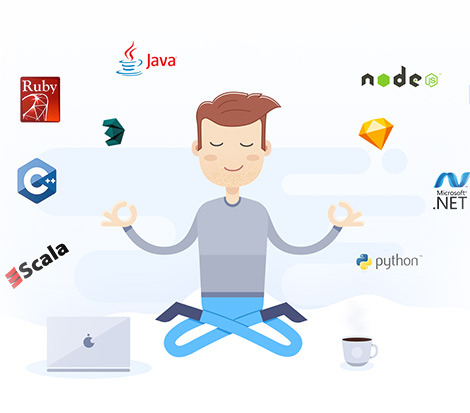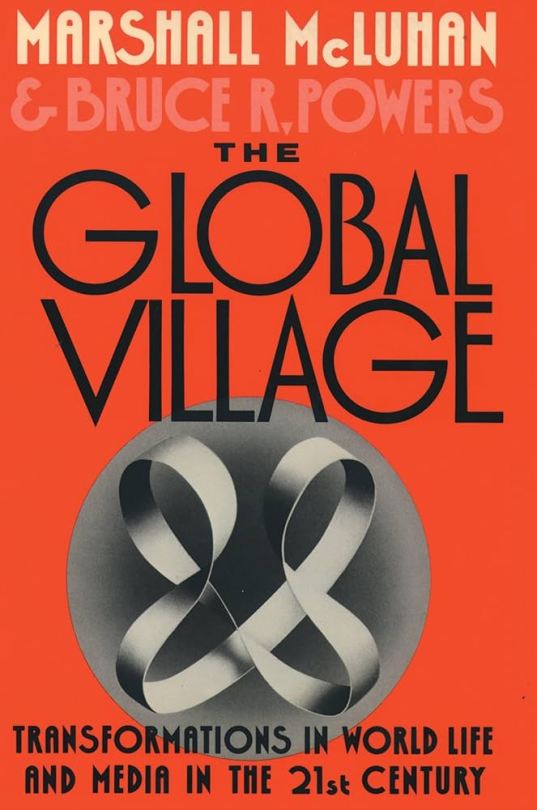#global technology
Text
Samsung Regains Dominance in Accelerating Global Smartphone Market Amid Macroeconomic Recovery
In the first quarter of 2024, the global smartphone market has achieved a remarkable 11% growth, a testament to the enhancing consumer demand and global macroeconomic recovery. Canalys’ research lends a fresh perspective to the fascinating comeback of Samsung, who has reclaimed the leadership with a 20% market share, riding on the wave of enthusiasm related to the launch of the Galaxy AI. In the…

View On WordPress
0 notes
Text
New AI Technology helps India emerge as the World’s Technology

Forget chai and samosas; India is serving up a sizzling dish, and that is none other than the new AI technology! Yes, the land of vibrant colors and ancient wisdom is fast becoming a tech hotspot, and new AI technology is the secret ingredient. Brace yourself for a journey through India’s AI adventure, where algorithms dance with chai masala and robots dream in Bollywood beats.
Table of Contents
Tech Tiffin: A Feast of Talent and Innovation
Spice Route to Success: A Blend of Policy and Investment
Curry-fying Every Corner: New AI Technology Across Industries
Challenges with a Chutney of Solutions
The Future is Masala-fied: A Taste of What’s to Come
Conclusion
Tech Tiffin: A Feast of Talent and Innovation
India has the brains, and boy, does it use them! India has the third-largest pool of IT skills in the world when compared to the IT hub of the world. This makes India an ideal breeding ground for new AI technology. Engineers create algorithms like magic tricks, while startups pop up like chai stalls around the neighborhood, each bursting with creative ideas. From healthcare solutions identifying diseases with eagle-eyed precision to chatbots that speak the native language like your bestie. The new AI technology is brewing up a storm of technological advancement in India.
Spice Route to Success: A Blend of Policy and Investment
India is not simply putting turmeric into the AI pot and hoping for the best. The government has a Michelin-star recipe, with initiatives inspiring the business hub of India such as the National AI Strategy and the Digital India program adding texture. On one hand, these initiatives create a conducive atmosphere for new AI technology to thrive, and on the other, the investors—they’re like foodies, pouring in billions to sustain this new AI technology-driven feast. What was the result? A hot ecosystem of hybrid workforce where startups thrive and ideas get funded faster than you can say “baingan bharta!“
Curry-fying Every Corner: New AI Technology Across Industries
Not to place all its eggs in one basket, the new AI technology is altering the role of IT in every sector. From Mumbai’s hectic streets to Kerala’s tranquil pastures. For instance, farmers employ AI-powered drones to monitor crops, physicians use AI algorithms to diagnose ailments, and even the old game of cricket is given a technological boost with AI-powered coaching. It’s like a delectable thali, with each dish featuring its own distinct AI flavor, isn’t it?
Challenges with a Chutney of Solutions
Of all, no technological journey concludes without a few mishaps, and the technological advancement in India is no exception. Data privacy problems, moral dilemmas, and a shortage of skilled workers are among the obstacles confronting India’s technology growth. But, just as a skilled cook deals with tricky spices, India has a chutney of remedies in its arsenal. Robust data protection rules, code of conduct frameworks, and measures to close the skill gap are keeping the AI flame burning resiliently.
Indian technology is backed by government funding. The Aarogya Setu app, built by a government-backed consortium, is an AI-powered app that tracks COVID-19 contacts, has over 200 million users, and has contributed significantly to India’s pandemic management. Another such instance is eNAM, the National Agriculture Market, a government-initiated platform that uses AI to connect farmers directly with buyers, eliminating middlemen and improving farmer incomes by an average of 25%.
The Future is Masala-fied: A Taste of What’s to Come
India’s AI adventure is merely at its inception. In the past, India has used AI to track COVID—the infamous Arogya Setu app. eNAM is another AI revolution that transformed agriculture. Among the budding startups is Niramai Health, which uses AI-powered thermal imaging to detect breast cancer early, reaching 5 million women in rural areas without access to conventional mammograms. CropIn is another ag-tech company that combines AI and satellite imagery to provide personalized farm advice, increasing crop yields by up to 30% for millions of farmers across India.
From Jugaad to Juggernaut, India’s AI is joining hands with global technology. India-US Joint AI Development Centre, established in 2023, focuses on developing AI solutions for healthcare, agriculture, and disaster management, with potential benefits for both nations. Then there is the India-UK AI BRIDGE Program, which fosters joint research projects between Indian and UK researchers, leading to breakthroughs in areas like climate change mitigation and intelligent urban planning.
The future seems as promising as a plate of pani puri. Consider AI-powered smart cities that regulate traffic and pollution, individualized education suited to each student’s needs, and even robots that do bhangra with you!
Conclusion
As they say, the sky’s the limit, and India has the spice to make them all sizzle. So, the next time you envisage India, acknowledge that it is more than just temples and tigers. It’s also a country where AI aspirations simmer and the scent of invention permeates the air. Prepare for a world where chai meets code as India leads the way in serving up the future, one artificially intelligent creation at a time!
I hope you had a fun and informative time learning about the latest technological exploits of India. Stay tuned as we bring in more exciting tech news at The Tech Insider.
0 notes
Text
Canon Nanoimprint Lithography
Update, 2 days later: And of course Asianometry had already made an hour-long deep-dive video into the microchip-fabricating technology, which will in short quite possibly challenge TSMC's global near-monopoly on the industry.
youtube
0 notes
Text

AMA Global Technology is one of NJ's best IT outsourcing and BPO service providers. Call +425-679-1353 for web and App development, Digital marketing strategy, staff augmentation, and more.
0 notes
Text
What is Web3?
Introduction
Web3 is a new iteration of the World Wide Web that is built on decentralized technologies such as blockchain and cryptography. It is designed to give users more control over their data and privacy, and to create a more open and democratic internet.
Web3 is still in its early stages of development, but it has the potential to revolutionize the way we use the internet. It could make…

View On WordPress
#and non-fungible tokens (NFTs).#Blockchain technology#Data encryption#data security#decentralized applications (dApps)#decentralized finance (DeFi)#Global technology#Networking#Peer to peer#Tamperproof#Web3#Www
0 notes
Text
FPT Software Opens New Office & Hosted Appreciation Dinner in Thailand
FPT Software Opens New Office & Hosted Appreciation Dinner in Thailand
FPT Software, Vietnam’s leading IT solutions provider, has recently announced the opening of a new office & hosted appreciation dinner in Bangkok, Thailand. This branch, targeting the top 30 IT companies in Thailand, assists FPT Software’s strategic move to expand its global footprint.
The inauguration was attended by the Ambassador of the S.R. of Vietnam to Thailand, H.E. Phan Chi Thanh, KBTG…

View On WordPress
#CEO of FPT Software-Greater Bay Indochina#FPT Software#FPT Software Opens New Office#Global Technology#H.E. Phan Chi Thanh#Hosted Appreciation Dinner in Thailand#IT Services Provider#Levi Nguyen#Vietnam#Vietnam Ambassador
0 notes
Text
Prison-tech is a scam - and a harbinger of your future

If you'd like an essay-formatted version of this post to read or share, here's a link to it on pluralistic.net, my surveillance-free, ad-free, tracker-free blog:
https://pluralistic.net/2024/02/14/minnesota-nice/#shitty-technology-adoption-curve

Here's how the shitty technology adoption curve works: when you want to roll out a new, abusive technology, look for a group of vulnerable people whose complaints are roundly ignored and subject them to your bad idea. Sand the rough edges off on their bodies and lives. Normalize the technological abuse you seek to inflict.
Next: work your way up the privilege gradient. Maybe you start with prisoners, then work your way up to asylum seekers, parolees and mental patients. Then try it on kids and gig workers. Now, college students and blue collar workers. Climb that curve, bit by bit, until you've reached its apex and everyone is living with your shitty technology:
https://pluralistic.net/2021/02/24/gwb-rumsfeld-monsters/#bossware
Prisoners, asylum seekers, drug addicts and other marginalized people are the involuntary early adopters of every form of disciplinary technology. They are the leading indicators of the ways that technology will be ruining your life in the future. They are the harbingers of all our technological doom.
Which brings me to Minnesota.
Minnesota is one of the first states make prison phone-calls free. This is a big deal, because prison phone-calls are a big business. Prisoners are literally a captive audience, and the telecommunications sector is populated by sociopaths, bred and trained to spot and exploit abusive monopoly opportunities. As states across America locked up more and more people for longer and longer terms, the cost of operating prisons skyrocketed, even as states slashed taxes on the rich and turned a blind eye to tax evasion.
This presented telco predators with an unbeatable opportunity: they approached state prison operators and offered them a bargain: "Let us take over the telephone service to your carceral facility and we will levy eye-watering per-minute charges on the most desperate people in the world. Their families – struggling with one breadwinner behind bars – will find the money to pay this ransom, and we'll split the profits with you, the cash-strapped, incarceration-happy state government."
This was the opening salvo, and it turned into a fantastic little money-spinner. Prison telco companies and state prison operators were the public-private partnership from hell. Prison-tech companies openly funneled money to state coffers in the form of kickbacks, even as they secretly bribed prison officials to let them gouge their inmates and inmates' families:
https://www.motherjones.com/politics/2019/02/mississippi-corrections-corruption-bribery-private-prison-hustle/
As digital technology got cheaper and prison-tech companies got greedier, the low end of the shitty tech adoption curve got a lot more crowded. Prison-tech companies started handing out "free" cheap Android tablets to prisoners, laying the groundwork for the next phase of the scam. Once prisoners had tablets, prisons could get rid of phones altogether and charge prisoners – and their families – even higher rates to place calls right to the prisoner's cell.
Then, prisons could end in-person visits and replace them with sub-skype, postage-stamp-sized videoconferencing, at rates even higher than the voice-call rates. Combine that with a ban on mailing letters to and from prisoners – replaced with a service that charged even higher rates to scan mail sent to prisoners, and then charged prisoners to download the scans – and prison-tech companies could claim to be at the vanguard of prison safety, ending the smuggling of dope-impregnated letters and other contraband into the prison system.
Prison-tech invented some wild shit, like the "digital stamp," a mainstay of industry giant Jpay, which requires prisoners to pay for "stamps" to send or receive a "page" of email. If you're keeping score, you've realized that this is a system where prisoners and their families have to pay for calls, "in-person" visits, handwritten letters, and email.
It goes on: prisons shuttered their libraries and replaced them with ebook stores that charged 2-4 times the prices you'd pay for books on the outside. Prisoners were sold digital music at 200-300% markups relative to, say, iTunes.
Remember, these are prisoners: locked up for years or decades, decades during which their families scraped by with a breadwinner behind bars. Prisoners can earn money, sure – as much as $0.89/hour, doing forced labor for companies that contract with prisons for their workforce:
https://www.prisonpolicy.org/blog/2017/04/10/wages/
Of course, there's the odd chance for prisoners to make really big bucks – $2-5/day. All they have to do is "volunteer" to fight raging wildfires:
https://www.hcn.org/articles/climate-desk-wildfire-california-incarcerated-firefighters-face-dangerous-work-low-pay-and-covid19/
So those $3 digital music tracks are being bought by people earning as little as $0.10/hour. Which makes it especially galling when prisons change prison-tech suppliers, whereupon all that digital music is deleted, wiping prisoners' media collection out – forever (literally, for prisoners serving life terms):
https://www.eff.org/deeplinks/2018/08/captive-audience-how-floridas-prisons-and-drm-made-113m-worth-prisoners-music
Let's recap: America goes on a prison rampage, locking up ever-larger numbers of people for ever-longer sentences. Once inside, prisoners had their access to friends and family rationed, along with access to books, music, education and communities outside. This is very bad for prisoners – strong ties to people outside is closely tied to successful reentry – but it's great for state budgets, and for wardens, thanks to kickbacks:
https://www.prisonpolicy.org/blog/2021/12/21/family_contact/
Back to Minnesota: when Minnesota became the fourth state in the USA where the state, not prisoners, would pay for prison calls, it seemed like they were finally breaking the vicious cycle in which every dollar ripped off of prisoners' family paid 40 cents to the state treasury:
https://www.kaaltv.com/news/no-cost-phone-calls-for-those-incarcerated-in-minnesota/
But – as Katya Schwenk writes for The Lever – what happened next is "a case study in how prison communication companies and their private equity owners have managed to preserve their symbiotic relationship with state corrections agencies despite reforms — at the major expense of incarcerated people and their families":
https://www.levernews.com/wall-streets-new-prison-scam/
Immediately after the state ended the ransoming of prisoners' phone calls, the private-equity backed prison-tech companies that had dug their mouth-parts into the state's prison jacked up the price of all their other digital services. For example, the price of a digital song in a Minnesota prison just jumped from $1.99 to $2.36 (for prisoners earning as little as $0.25/hour).
As Paul Wright from the Human Rights Defense Center told Schwenk, "The ideal world for the private equity owners of these companies is every prisoner has one of their tablets, and every one of those tablets is hooked up to the bank account of someone outside of prison that they can just drain."
The state's new prison-tech supplier promises to double the amount of kickbacks it pays the state each year, thanks to an aggressive expansion into games, money transfers, and other "services." The perverse incentive isn't hard to spot: the more these prison-tech companies charge, the more kickbacks they pay to the prisons.
The primary prison-tech company for Minnesota's prisons is Viapath (nee Global Tel Link), which pioneered price-gouging on in-prison phone calls. Viapath has spent the past two decades being bought and sold by different private equity firms: Goldman Sachs, Veritas Capital, and now the $46b/year American Securities.
Viapath competes with another private equity-backed prison-tech giant: Aventiv (Securus, Jpay), owned by Platinum Equity. Together, Viapath and Aventiv control 90% of the prison-tech market. These companies have a rap-sheet as long as your arm: bribing wardens, stealing from prisoners and their families, and recording prisoner-attorney calls. But these are the kinds of crimes the state punishes with fines and settlements – not by terminating its contracts with these predators.
These companies continue to flout the law. Minnesota's new free-calls system bans prison-tech companies from paying kickbacks to prisons and prison-officials for telcoms services, so the prison-tech companies have rebranded ebooks, music, and money-transfers as non-communications products, and the kickbacks are bigger than ever.
This is the bottom end of the shitty technology adoption curve. Long before Ubisoft started deleting games that you'd bought a "perpetual license" for, prisoners were having their media ganked by an uncaring corporation that knew it was untouchable:
https://www.youtube.com/watch?v=VIqyvquTEVU
Revoking your media, charging by the byte for messaging, confiscating things in the name of security and then selling them back to you – these are all tactics that were developed in the prison system, refined, normalized, and then worked up the privilege gradient. Prisoners are living in your technology future. It's just not evenly distributed – yet.
As it happens, prison-tech is at the heart of my next novel, The Bezzle, which comes out on Feb 20. This is a followup to last year's bestselling Red Team Blues, which introduced the world to Marty Hench, a two-fisted, hard-bitten, high-tech forensic accountant who's spent 40 years busting Silicon Valley finance scams:
https://us.macmillan.com/books/9781250865878/thebezzle
In The Bezzle, we travel with Marty back to the mid 2000s (Hench is a kind of tech-scam Zelig and every book is a standalone tale of high-tech ripoffs from a different time and place). Marty's trying to help his old pal Scott Warms, a once-high-flying founder who's fallen prey to California's three-strikes law and is now facing decades in a state pen. As bad as things are, they get worse when the prison starts handing out "free" tablet and closing down the visitation room, the library, and the payphones.
This is an entry to the thing I love most about the Hench novels: the opportunity to turn all this dry, financial skullduggery into high-intensity, high-stakes technothriller plot. For me, Marty Hench is a tool for flensing the scam economy of all its layers of respectability bullshit and exposing the rot at the core.
It's not a coincidence that I've got a book coming out in a week that's about something that's in the news right now. I didn't "predict" this current turn – I observed it. The world comes at you fast and technology news flutters past before you can register it. Luckily, I have a method for capturing this stuff as it happens:
https://pluralistic.net/2021/05/09/the-memex-method/
Writing about tech issues that are long-simmering but still in the periphery is a technique I call "predicting the present." It's the technique I used when I wrote Little Brother, about out-of-control state surveillance of the internet. When Snowden revealed the extent of NSA spying in 2013, people acted as though I'd "predicted" the Snowden revelations:
https://www.wired.com/story/his-writing-radicalized-young-hackers-now-he-wants-to-redeem-them/
But Little Brother and Snowden's own heroic decision have a common origin: the brave whistleblower Mark Klein, who walked into EFF's offices in 2006 and revealed that he'd been ordered by his boss at AT&T to install a beam-splitter into the main fiber trunk so that the NSA could illegally wiretap the entire internet:
https://www.eff.org/document/public-unredacted-klein-declaration
Mark Klein inspired me to write Little Brother – but despite national press attention, the Klein revelations didn't put a stop to NSA spying. The NSA was still conducting its lawless surveillance campaign in 2013, when Snowden, disgusted with NSA leadership for lying to Congress under oath, decided to blow the whistle again:
https://apnews.com/article/business-33a88feb083ea35515de3c73e3d854ad
The assumption that let the NSA get away with mass surveillance was that it would only be weaponized against the people at the bottom of the shitty technology adoption curve: brown people, mostly in other countries. The Snowden revelations made it clear that these were just the beginning, and sure enough, more than a decade later, we have data-brokers sucking up billions in cop kickbacks to enable warrantless surveillance, while virtually following people to abortion clinics, churches, and protests. Mass surveillance is chugging its way up the shitty tech adoption curve with no sign of stopping.
Like Little Brother, The Bezzle is intended as a kind of virtual flythrough of what life is like further down on that curve – a way for readers who have too much agency to be in the crosshairs of a company like Viapath or Avently right now to wake up before that kind of technology comes for them, and to inspire them to take up the cause of the people further down the curve who are mired in it.
The Bezzle is an intense book, but it's also a very fun story – just like Little Brother. It's a book that lays bare the internal technical workings of so many scams, from multi-level marketing to real-estate investment trusts, from music royalty theft to prison-tech, in the course of an ice-cold revenge plot that keeps twisting to the very last page.
It'll drop in six days. I hope you'll check it out:
https://us.macmillan.com/books/9781250865878/thebezzle
#pluralistic#the bezzle#marty hench#books#prison-tech#scams#jpay#securus#minnesota#prisones#shitty technology adoption curve#drm#enshittification#kickbacks#corruption#private equity#viapath#global tel link#bribery#aventiv#disciplinary technology#fcc#predicting the present#carceral state
586 notes
·
View notes
Link
Still in the early stages, but this is a huge breakthrough!
“In 2017, scientists at a Swedish university created an energy system that makes it possible to capture and store solar energy for up to 18 years, releasing it as heat when needed.
Now the researchers have succeeded in getting the system to produce electricity by connecting it to a thermoelectric generator. Though still in its early stages, the concept developed at Chalmers University of Technology in Gothenberg could pave the way for self-charging electronics that use stored solar energy on demand.
“This is a radically new way of generating electricity from solar energy. It means that we can use solar energy to produce electricity regardless of weather, time of day, season, or geographical location,” explains research leader Kasper Moth-Poulsen, Professor at the Department of Chemistry and Chemical Engineering at Chalmers.”
#technology#sustainable power#sustainable energy#green energy#solar energy#solar battery#hope#good news#climate change#global warming#renewable energy#solar panels
4K notes
·
View notes
Text
i'm sorry but all international news looks like this to me:
"Why China is collapsing (And we should be glad)"
"USA bans wheelchairs after confirming they were not mentioned in the Bible"
"Why China is growing (And we should be terrified)"
"Self-made billionaire Oligarchius Whiteperson spends 7 trillion dollars in useless piece of fake-futuristic technology that will benefit no one"
"BRICS welcomes the People's Democratic Republic of Fuckedupistan as their new member on a mutual quest for stability and economic prosperity"
"Finland declares internet connection a human right; it is now free of charge within the country"
"Juan Carlos Hitler is elected president of Irrelevant LATAM Country. Guess what his first act is."
"Russia says they're very close to winning the war. Ukraine responds with 'nuh uh'".
#memes#explore#explorepage#funny#fyp#fypツ#hilarious#writers on tumblr#female artists#breaking news#news#world news#global news#technology#latest news#fypシ#fypage#tumblr fyp#viral#foryou#foryoupage#china#russia#usa#finland#billionaire#millionaire#capitalism#late stage capitalism#economics
291 notes
·
View notes
Text
"A net-zero power system is closer than we think.
New research, published by RMI, indicates that an exponential surge in renewable energy deployment is outpacing the International Energy Agency’s most ambitious net-zero predictions for 2030.
That’s right: Surging solar, wind, and battery capacity is now in-line with net-zero scenarios.
“For the first time, we can, with hand on heart, say that we are potentially on the path to net zero,” Kingsmill Bond, Senior Principal at RMI, said. “We need to make sure that we continue to drive change, but there is a path and we are on it.”
And that’s really good news.
Exponential growth in renewable energy has put the global electricity system at a tipping point. What was once seen as a wildly daunting task — transitioning away from fossil fuels — is now happening at a faster pace every year.
Based on this new research, conducted in partnership with the Bezos Earth Fund, RMI projects that solar and wind will supply over a third of all global electricity by 2030, up from about 12% today, which would surpass recent calls for a tripling of total renewable energy capacity by the end of the decade.
Global progress in the renewable energy sector
China and Europe have been leading the way in clean energy generation, but the deployment of renewable energy has also been widely distributed across the Middle East and Africa.
Research from Systems Change Lab shows that eight countries (Uruguay, Denmark, Lithuania, Namibia, Netherlands, Palestine, Jordan, and Chile) have already grown solar and wind power faster than what is needed to limit global warming to 1.5°C, proving that a swift switch to renewable energy is not only feasible — it’s entirely achievable.
In order to make that switch, globally, wind and solar need to grow from 12% to 41% by 2030. Denmark, Uruguay, and Lithuania have already achieved that increase in the span of eight years.
Meanwhile, Namibia, the Netherlands, Palestine, Jordan, and Chile have grown solar and wind energy at sufficient rates for five years...

The economic impact of climate progress
Not only is this an exciting and unprecedented development for the health of the environment, but this rapid transition to clean energy includes widespread benefits, like jobs growth, more secure supply chains, and reductions in energy price inflation.
This progress spans both developing and developed countries, all driven to accelerate renewables for a number of different reasons: adopting smart and effective policies, maintaining political commitments, lowering the costs of renewable energy, and improving energy security.
And with exponential growth of clean energy means sharp declines in prices. This puts fossil fuels at a higher, uncompetitive cost — both financially and figuratively.
RMI suggests that solar energy is already the cheapest form of electricity in history — and will likely halve in price by 2030, falling as low as $20/MWh in the coming years. This follows previous trends: solar and battery costs have declined 80% between 2012 and 2022, and offshore wind costs are down 73%."
-via Good Good Good, July 12, 2023
Let me repeat that:
For the first time in history, we are on an actual, provably achievable path to net zero emissions
#electricity#renewable electricity#renewable energy#net zero#climate crisis#fossil fuels#wind power#solar power#battery technology#uruguay#denmark#lithuania#namibia#netherlands#palestine#jordan#chile#global development#good news#hope
357 notes
·
View notes
Text
I think solarpunk is a future we are capable of accomplishing, but are stuck because people see nature and technology as direct and moral opposites, instead of forces that could be used together to grow and advance the other, and us.
#technology could help stop global warming#amd nature could help further technological advances#solarpunk#orringinal rambles
207 notes
·
View notes
Text

Okay, the Tiberian Sun track was actually called Killing Machine, but close enough
#bionicle#tiberian sun#command and conquer#memes#GDI would fucking kill to get their hands on Matoran disc throwers#imagine spending decades perfecting cyborg technology in order to make mass produced super soldiers#and then it gets immediately hard countered by some robot hobbit who spend the past thousand years learning to throw good#that might actually send Kane into Cardiac Arrest#bionicle memes#command and conquer memes#GDI#Global Defense Initiative
44 notes
·
View notes
Text
while watching nimona, my friends and I got into a huge argument about how they could have scottie terriers with no scotland and jazz with no harlem renaissance so now I too just like to drop explicit references to real world things in my fic that have 0% justification being there in the first place and i feel like the funniest mfer alive
#current kill count:#italian food#rube goldberg#boomers#the universal constants#actually obsessed with the worldbuilding in the nimona movie#idk how it is in the webcomic#but ive been having a time working out how an industrial city that size is able to keep itself fed#with no international relationships and thus no imports#yet with no visible dedicated space for farming or livestock#future tech you might say? made all in house with no global exchange of ideas or technology??#where'd you mine the metals for that big fuck off canon of yours huh director??#short answer is it doesn't work#long answer is#im inclined towards a lil bit of north korean style propagandist isolationism and a lil bit of 18th century dutch mercantilism#digging into this with the enthusiasm of a dog with her chew toy#stay tuned#he who controls the canals controls the universe
46 notes
·
View notes
Note
Why were pigeons abandoned? I’m assuming because technology replaced them but I can’t find a source
There wasn't a big need for them after the war and pigeons are culturally significant to a lot of people. They were a cheap source of food and fertilizer but (i know how I'm going to sound when I say this and I apologize) but my theory is the government did it on purpose to not only take a very useful livestock from the common knowledge of the American people but to also purposefully sow hate against different cultures.
#im basing this off my observations as an American.#americans really dont like pigeons but that isnt the case globally tbh#remember when a pigeon beat broadband internet in a race?#i dont think its that technology replaced them because not every pigeon is a racing or carrier pigeon
49 notes
·
View notes
Text

╭ ⋯ ✽ PACTCREST METZ PROTOTYPE ✧˖° BREVEY !!











╰ ⋯ ✽ 🔌 | 🐻 | 🔌 - 🐻 | 🔌 | 🐻 - 🔌 | 🐻 | 🔌 ✽

#— ☄︎𓇻 ݁ . . look up in the sky * ༊彡⬭ 𓈒#SHES COMING TO GLOBAL AFTER YAN MIAOS BANNER ENDS LETS GOOOOOOOO#stimboard#stimmy#eye strain#eyestrain#blue#dark blue#red#grey#silver#brown#black#stars#starry#light#fabric#teddy bear#hands#technology#machinery#mechanics#gears#tower of fantasy
15 notes
·
View notes
Text


"People in the 90s, and people still today to some degree, although, in the 90s, it was more obvious were like, oh, we're building the World Soul as we all get network together. We'll see that we're all one and we'll have no choice, but to overcome our enmity and sort of become a global, a planetary civilization, which was a big Motif in New Age thinking - this sort of planetary Consciousness.
Um, and cool, groovy, you know. Like, "Uh, you know, we're all one", right? But, actually, The Global Village is a paranoid place. That was the thing that Marshall McCluhan talked about in the 60s. He said, yeah, we're moving towards a global village and people tended to think he meant sort of, you know, like in a kind of a Walt Disney way like, oh, it's a little village, and we're all happy and together.
No, no, that's not what he meant at all. He meant it was going to be a place where everyone was aware of everybody else's business. There's a lot of backbiting, envy, social tension. You know, so it's a mix - it's a deeply mixed bag.
And I was able to articulate in a way both the Utopian and, if you will, the Demonic side of this kind of global technology. But a more, I think a better figure rather than thinking of the sort of angel-demon tension is, the thing about technology, in particular, if it has a mythological identity - it's the trickster and the tricksters bring gifts. And they bring pranks.
They can be devilish, they can be celebratory and erotic. They can open the gates to the other dimensions, and they can fool you. So all of those kind of qualities from a mythological level, I think that's at play inside our technology and that this just hasn't changed since, you know, 25 years ago when I was writing Techgnosis - it manifests in different ways. There are different. balances."
- Erik Davis in an Interview on New Thinking Allowed with Jeffery Mishlove
#erik davis#marshall mcluhan#jeffery mishlove#techgnosis#the global village#philosophy#technology#the internet#myth#magic#mysticism#gnosis#communication theory#quote#writing#authors#public intellectuals#writer#writers#author#trickster#mythology
11 notes
·
View notes